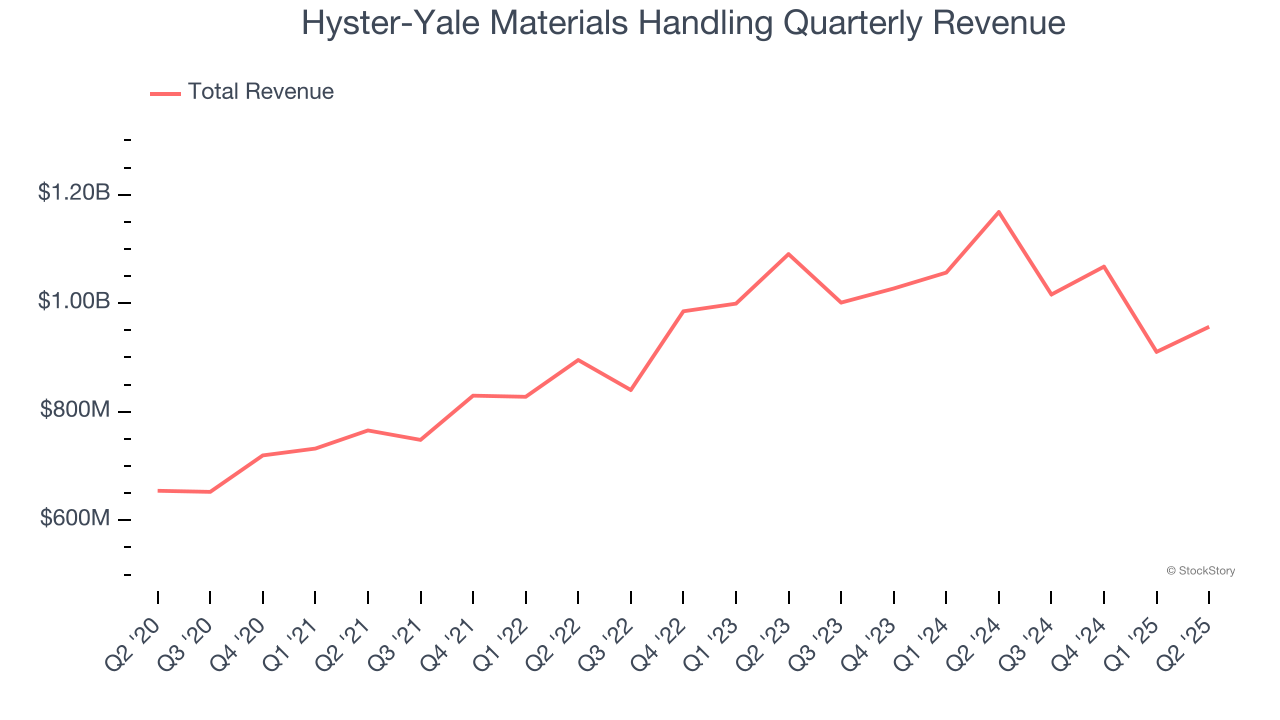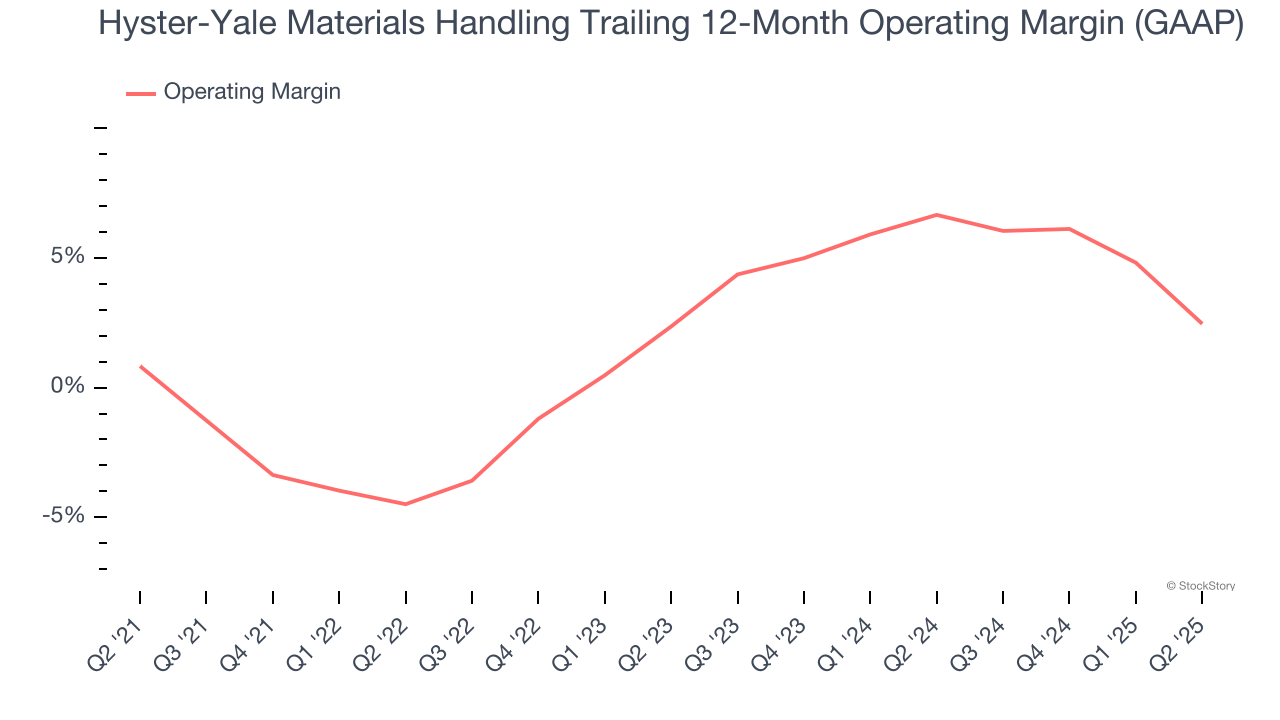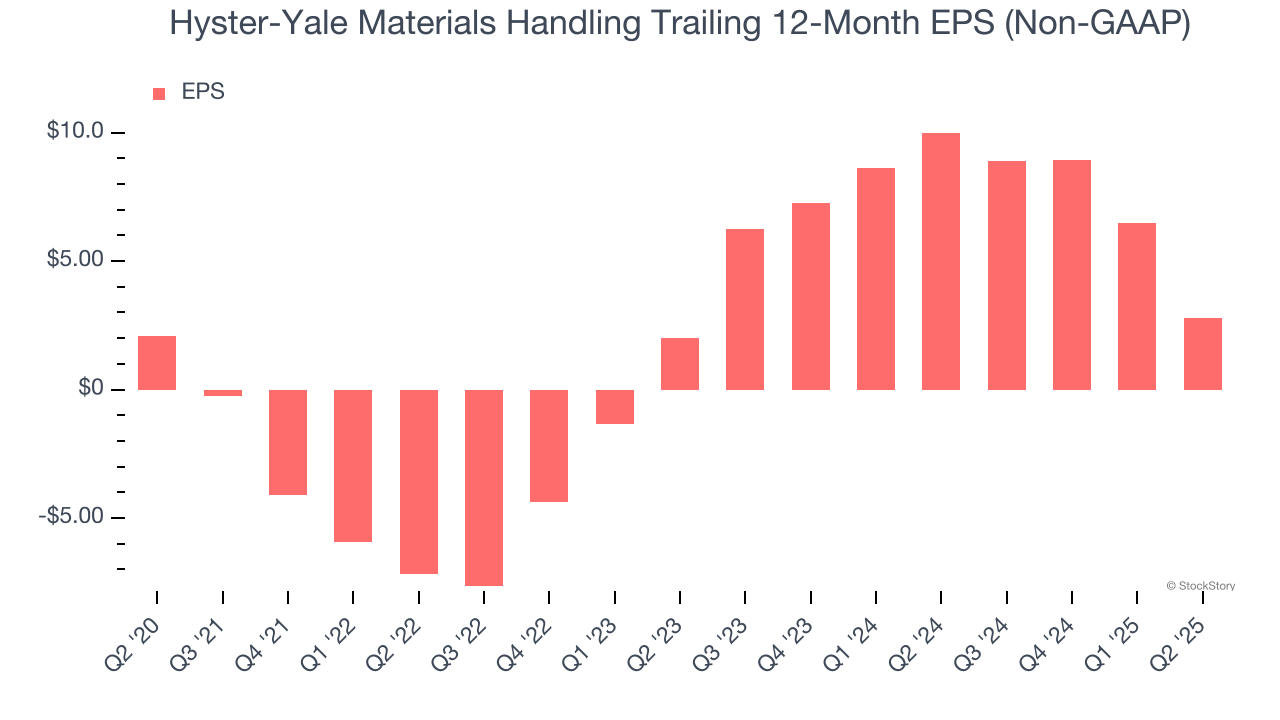
Lift truck and material handling solutions manufacturer Hyster-Yale Materials Handling (NYSE:HY) beat Wall Street’s revenue expectations in Q2 CY2025, but sales fell by 18.1% year on year to $956.6 million. Its non-GAAP loss of $0.14 per share was significantly below analysts’ consensus estimates.
Is now the time to buy Hyster-Yale Materials Handling? Find out by accessing our full research report, it’s free.
Hyster-Yale Materials Handling (HY) Q2 CY2025 Highlights:
- Revenue: $956.6 million vs analyst estimates of $936.9 million (18.1% year-on-year decline, 2.1% beat)
- Adjusted EPS: -$0.14 vs analyst estimates of $0.60 (significant miss)
- Adjusted EBITDA: $21.4 million vs analyst estimates of $35.25 million (2.2% margin, 39.3% miss)
- Operating Margin: -0.9%, down from 8.1% in the same quarter last year
- Market Capitalization: $732.2 million
Company Overview
Playing a significant role in the development of the hydraulic lift truck, Hyster-Yale (NYSE:HY) designs, manufactures, and sells materials handling equipment to various sectors.
Revenue Growth
A company’s long-term sales performance is one signal of its overall quality. Even a bad business can shine for one or two quarters, but a top-tier one grows for years. Unfortunately, Hyster-Yale Materials Handling’s 5.4% annualized revenue growth over the last five years was tepid. This was below our standard for the industrials sector and is a tough starting point for our analysis.

We at StockStory place the most emphasis on long-term growth, but within industrials, a half-decade historical view may miss cycles, industry trends, or a company capitalizing on catalysts such as a new contract win or a successful product line. Hyster-Yale Materials Handling’s recent performance shows its demand has slowed as its revenue was flat over the last two years. 
This quarter, Hyster-Yale Materials Handling’s revenue fell by 18.1% year on year to $956.6 million but beat Wall Street’s estimates by 2.1%.
Looking ahead, sell-side analysts expect revenue to decline by 6.9% over the next 12 months, a deceleration versus the last two years. This projection doesn't excite us and suggests its products and services will face some demand challenges.
Software is eating the world and there is virtually no industry left that has been untouched by it. That drives increasing demand for tools helping software developers do their jobs, whether it be monitoring critical cloud infrastructure, integrating audio and video functionality, or ensuring smooth content streaming. Click here to access a free report on our 3 favorite stocks to play this generational megatrend.
Operating Margin
Operating margin is a key measure of profitability. Think of it as net income - the bottom line - excluding the impact of taxes and interest on debt, which are less connected to business fundamentals.
Hyster-Yale Materials Handling was profitable over the last five years but held back by its large cost base. Its average operating margin of 1.9% was weak for an industrials business. This result isn’t too surprising given its low gross margin as a starting point.
On the plus side, Hyster-Yale Materials Handling’s operating margin rose by 1.6 percentage points over the last five years, as its sales growth gave it operating leverage.

In Q2, Hyster-Yale Materials Handling’s breakeven margin was down 9 percentage points year on year. Since Hyster-Yale Materials Handling’s operating margin decreased more than its gross margin, we can assume it was less efficient because expenses such as marketing, R&D, and administrative overhead increased.
Earnings Per Share
Revenue trends explain a company’s historical growth, but the long-term change in earnings per share (EPS) points to the profitability of that growth – for example, a company could inflate its sales through excessive spending on advertising and promotions.
Hyster-Yale Materials Handling’s unimpressive 6% annual EPS growth over the last five years aligns with its revenue performance. On the bright side, this tells us its incremental sales were profitable.

Like with revenue, we analyze EPS over a shorter period to see if we are missing a change in the business.
For Hyster-Yale Materials Handling, its two-year annual EPS growth of 17.9% was higher than its five-year trend. This acceleration made it one of the faster-growing industrials companies in recent history.
In Q2, Hyster-Yale Materials Handling reported adjusted EPS at negative $0.14, down from $3.58 in the same quarter last year. This print missed analysts’ estimates. We also like to analyze expected EPS growth based on Wall Street analysts’ consensus projections, but there is insufficient data.
Key Takeaways from Hyster-Yale Materials Handling’s Q2 Results
We enjoyed seeing Hyster-Yale Materials Handling beat analysts’ revenue expectations this quarter. On the other hand, its EBITDA missed and its EPS fell short of Wall Street’s estimates. Overall, this quarter could have been better. The stock traded down 5.8% to $39.88 immediately following the results.
Hyster-Yale Materials Handling may have had a tough quarter, but does that actually create an opportunity to invest right now? What happened in the latest quarter matters, but not as much as longer-term business quality and valuation, when deciding whether to invest in this stock. We cover that in our actionable full research report which you can read here, it’s free.
